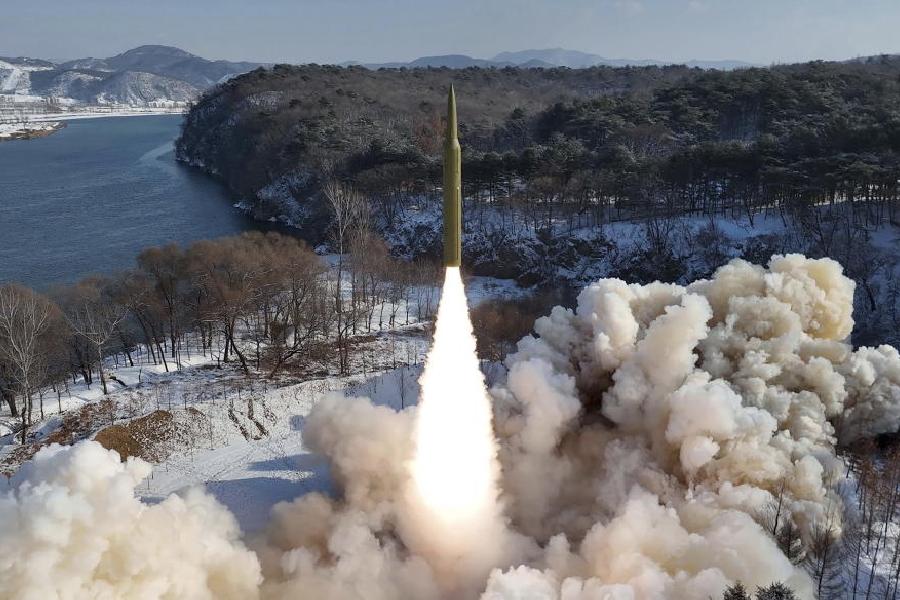South Korea's military said Wednesday that North Korea fired several cruise missiles into waters off its western coast, as an analysis of commercial satellite images suggested that the North has torn down a huge arch in its capital that symbolized reconciliation with war-divided rival South Korea.
North Korean leader Kim Jong Un last week described the Pyongyang monument as an “eyesore” and called for its removal while declaring that the North was abandoning long-standing goals of a peaceful unification with South Korea and ordered a rewriting of the North's constitution to define the South as its most hostile foreign adversary.
The launches marked North Korea's second known launch event of the year, following a Jan 14 flight test-firing of the country's first solid-fuel intermediate range ballistic missile, which reflected its efforts to advance its lineup of weapons targeting US military bases in Japan and Guam.
South Korea's Joint Chiefs of Staff said Wednesday that the US and South Korean militaries were analysing the latest launches. It did not immediately confirm the exact number of missiles fired or their specific flight details.
“Our military has increased surveillance and vigilance and is closely coordinating with the United States while monitoring for further signs and activity from North Korea,” the Joint Chiefs of Staff said in a statement.
Tensions on the Korean Peninsula have increased in recent months as Kim continues to accelerate his weapons development and issue provocative threats of nuclear conflict with the United States and its Asian allies.
NK News, a North Korea-focused news site, reported that Pyongyang's Monument to the Three Charters for National Reunification, which was also commonly called the Arch of Reunification, appeared gone in satellite images taken by Planet Labs Tuesday morning, although it was unclear exactly when or how it was taken down. The Associated Press couldn't immediately confirm the report independently.
The arch was a 30-metre (about 100-foot) tall structure that looked over a highway leading to the city of Kaesong near the border with South Korea.
The US, South Korea and Japan have been expanding their combined military exercises in response to the North's missiles tests. Kim characterises these drills rehearsals for an invasion.
In the latest tit-for-tat, North Korea said last week that it conducted a test of a purported nuclear-capable underwater attack drone in response to a combined naval exercise by the United States, South Korea and Japan, as it blamed its rivals for tensions in the region.
Cruise missiles are among a broad range of weapons North Korea has been testing in recent years as it attempts to build a viable nuclear threat against the United States and its Asian allies.
Since 2021, the North has conducted several flight tests of what it describes as long-range cruise missiles, which it claims can cover ranges of up to 2,000 km (1,242 miles) away and are nuclear-capable.
While North Korean cruise missile activities aren't directly banned under UN sanctions, experts say those weapons potentially pose a serious threat to South Korea and Japan, as they are designed to fly like small airplanes and travel along landscape that would make them harder to detect by radar.
There are concerns that North Korea could dial up tensions in a US election year. Experts say the North would aim to increase its bargaining power as it plans for eventual negotiations with whoever wins the November presidential vote.
North Korea also has a long history of ramping up pressure on rival South Korea when it doesn't get what it wants from Washington.
During the speech at Pyongyang's rubber-stamp parliament where Kim announced that his country would no longer pursue reconciliation with the South, he accused South Korea of acting as “top-class stooges” of the Americans and repeated a threat that he would use his nukes to annihilate the South if provoked.
Analysts say North Korea could be aiming to diminish South Korea's voice in the regional nuclear standoff and eventually force direct dealings with Washington as it looks to cement its nuclear status.












